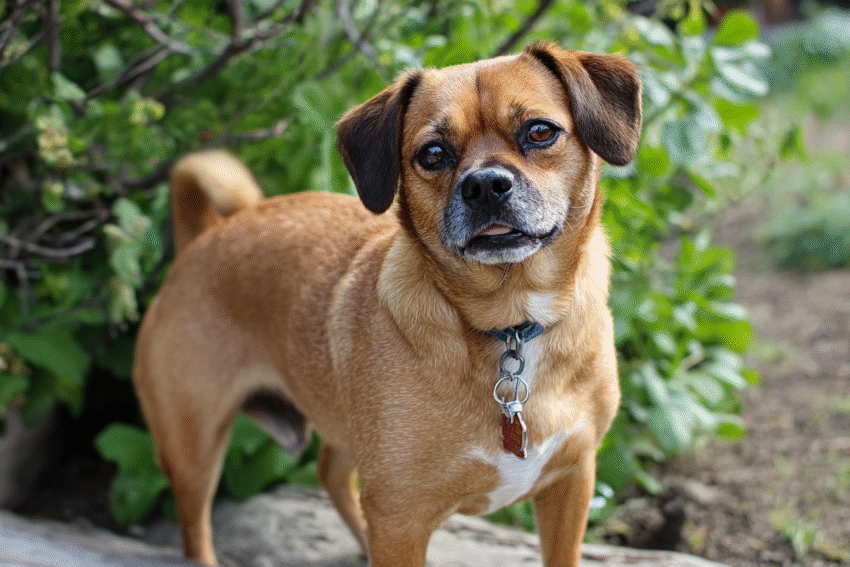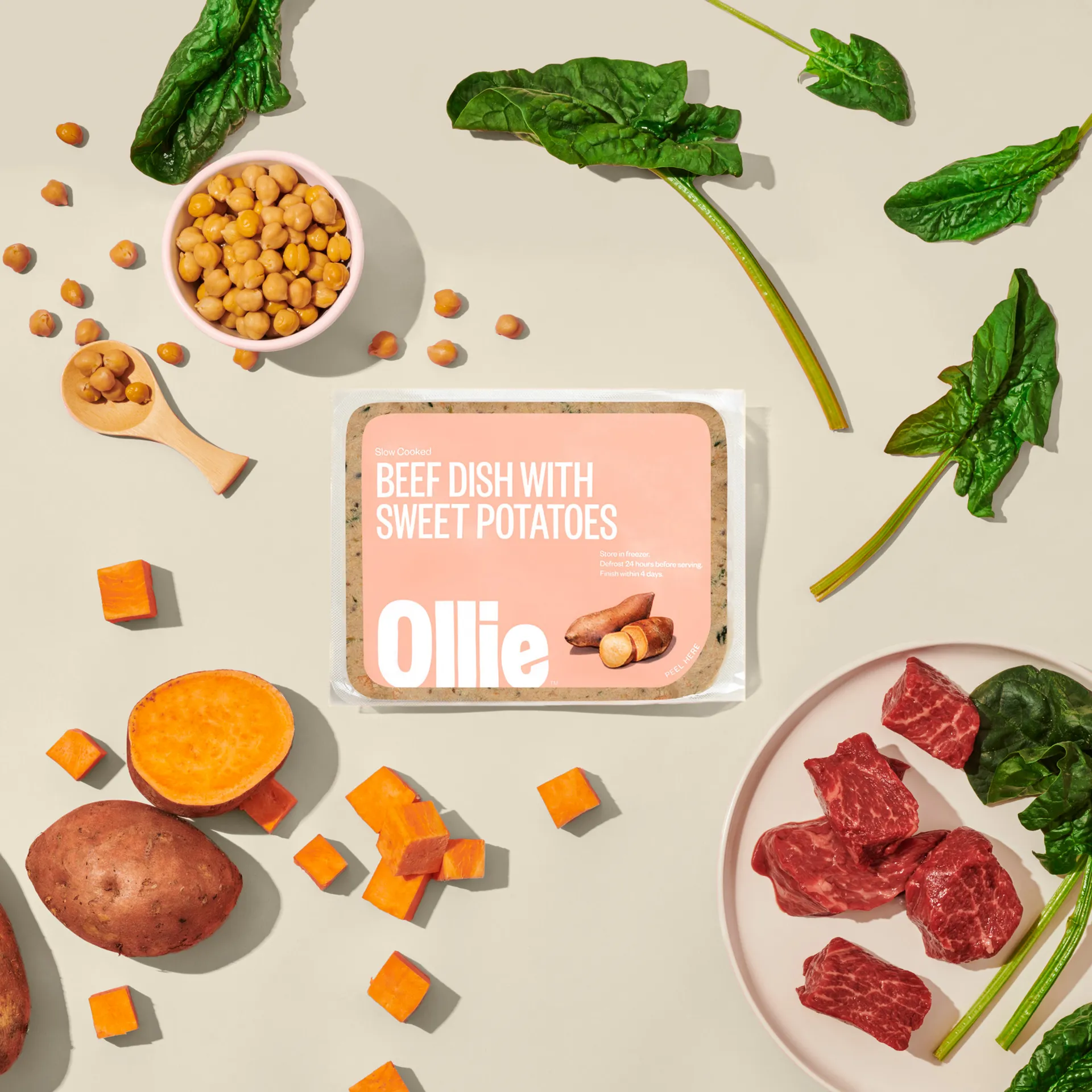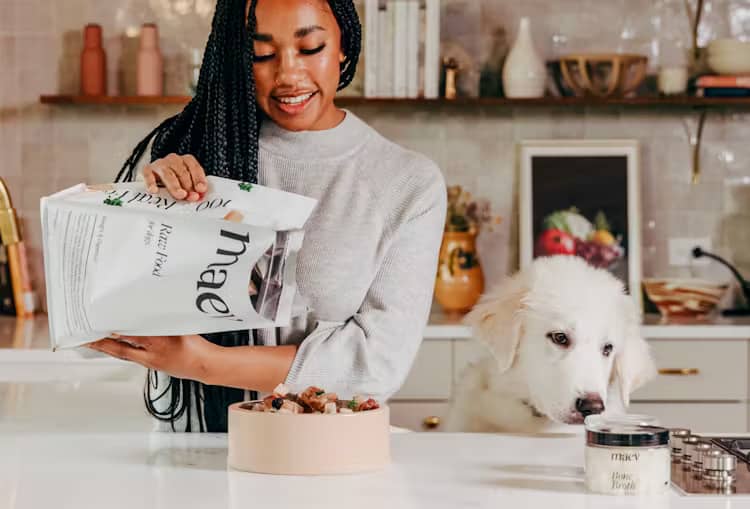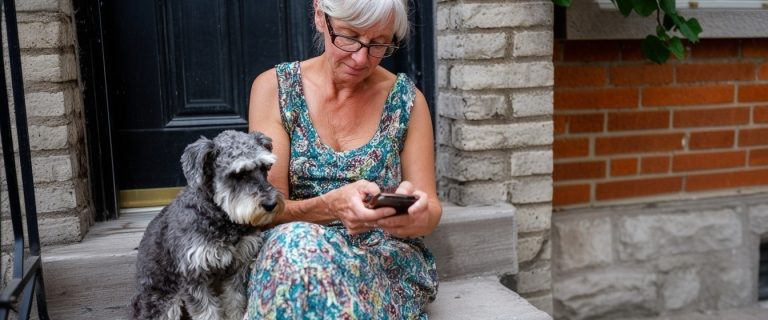Thinking about adding a Puggle to your family? You’re not alone. This adorable Beagle-Pug mix has been winning hearts since the 1990s, thanks to their playful personalities, soulful eyes, and compact, family-friendly size. Part clown, part cuddle bug, and part curious explorer, the Puggle often feels like the “best of both breeds” rolled into one lovable package.
But as with any mixed breed, there’s more to the story than just good looks and charm. Puggles come with their own quirks, health considerations, and energy levels that might be a perfect fit for your household—or a bit of a challenge if you’re not prepared. That’s where this guide comes in.
In the next sections, we’ll dive into everything you need to know about Puggles—from their history and temperament to grooming, training, and health care—so you can decide if this sweet little hybrid is the right companion for you.
Quick Breed Facts
| Trait | Info |
|---|---|
| Group | Designer (Beagle × Pug mix) |
| Height | 10–15 inches |
| Weight | 15–30 lbs |
| Lifespan | 10–15 years |
| Coat Type | Short, smooth, low-maintenance |
| Shedding Level | Moderate |
| Energy Level | Moderate to High |
| Good With Kids? | Yes, generally great with kids |
| Good With Other Pets? | Usually, with proper socialization |
| Trainability | Smart but can be stubborn; food-motivated |
Breed Overview
The Puggle is one of the most popular “designer dogs” to come out of the 1990s, born from crossing a purebred Pug with a purebred Beagle. While mixed breeds have existed naturally for centuries, the intentional creation of the Puggle is often credited to a Wisconsin breeder named Wallace Havens, who began promoting the hybrid in the United States during the late 1980s and early 1990s.
By blending the playful, curious nature of the Beagle with the affectionate, clownish charm of the Pug, breeders hoped to create a family-friendly companion that carried the best qualities of both parent breeds. The result was a small to medium-sized dog with big, expressive eyes, a sweet personality, and just enough spunk to keep life interesting.
Temperament & Personality
If you’ve ever wondered what happens when you mix a comedian with an explorer, meet the Puggle. These pups are equal parts goofy entertainer and curious adventurer, always ready to either snuggle on your lap or chase down an interesting smell. They’re social butterflies through and through—loving people, soaking up attention, and usually getting along well with kids and other pets. In short: Puggles really don’t like being left out of the action.
Here’s what you can expect personality-wise:
Playful & Curious – Thanks to their Beagle side, many Puggles have a nose that never stops working. Walks aren’t just exercise—they’re a full-on investigation.
Affectionate & Clingy – Channeling their Pug parent, Puggles often want to be your shadow. If you’re sitting, they’re sitting… right on top of you.
A Little Stubborn – Don’t let the cute face fool you; Puggles can be independent thinkers. Training works best with patience, consistency, and plenty of treats.
Talkative – From the Beagle’s howl to the Pug’s grumbles, Puggles often have something to “say.” They’re not always quiet roommates, but they sure keep life interesting.
Most Puggles land somewhere between active playmate and snuggly couch buddy. They’re lively enough to join you on long walks or backyard games, but also perfectly happy binge-watching your favorite show—preferably while hogging the blanket. Just remember, these dogs thrive on attention and don’t enjoy being left alone for long stretches. Keep their minds busy, and you’ll have a loyal, loving little comedian by your side.
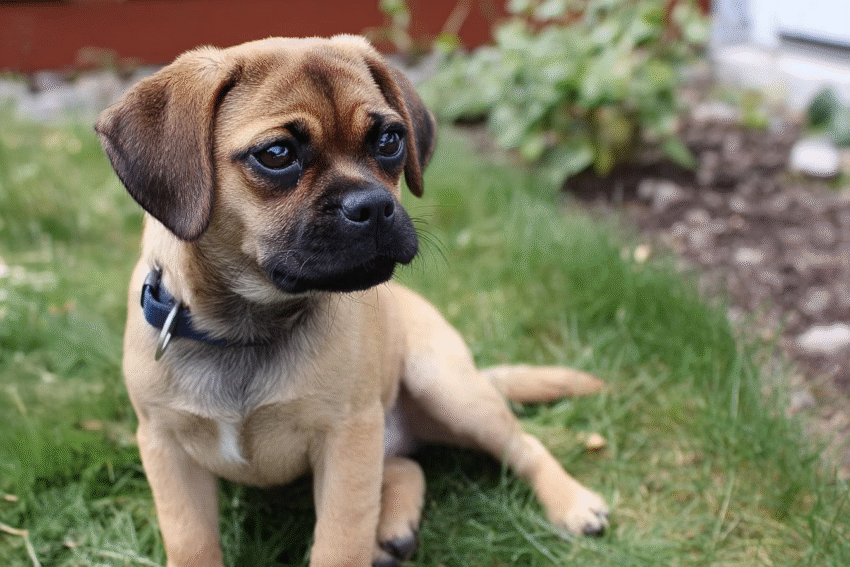
Appearance
Puggles are like little mash-ups of their parents—sometimes leaning more Beagle, sometimes more Pug, and often landing somewhere in the middle. That’s part of their charm: no two Puggles look exactly alike, but you can usually spot those big soulful eyes, short muzzles, and wagging tails a mile away.
Here’s what you’ll typically see in a Puggle:
Size – Small-to-medium, standing about 10–15 inches tall and weighing 15–30 pounds. Big enough to be sturdy playmates for kids, small enough to still count as a “lap dog.”
Build – Compact and muscular like a Beagle, but with the rounder face and shorter muzzle of a Pug. Some have the Beagle’s longer snout, which can be a plus health-wise.
Coat – Short, smooth, and low-maintenance. Their coats are usually dense but don’t require fancy grooming.
Colors – The most common shades are fawn, tan, black, and tricolor (like the Beagle). You’ll often see darker shading around the muzzle and ears.
Eyes & Ears – Big, round eyes that can melt even the coldest heart, paired with floppy Beagle-like ears that give them their signature puppy-dog look.
Tail – Usually curled like a Pug’s, though some Puggles have straighter Beagle-style tails.
Overall, Puggles have that “cute but scrappy” vibe—a dog that looks just as at home curled on the couch as they do trotting around the neighborhood sniffing out adventures.
Ideal Home
Puggles are adaptable little companions, but they thrive best in homes where they can be part of the action and get plenty of attention. They’re not the type to enjoy being left alone all day, and they’ll need both playtime and cuddle time to stay happy.
Families with kids – Their playful, sturdy nature makes them great with children.
Active households – Daily walks and play sessions keep their energy (and Beagle nose) satisfied.
Apartment living – They can do well in smaller spaces as long as they get enough exercise.
Homes with company – Puggles dislike being left alone too long, so they’re happiest with people around or a doggy buddy.
Pet-friendly households – With proper socialization, they usually get along with other dogs and even cats.
Hot Tip:
Puggles love being part of family life, so set up their bed or crate in a spot where they can see the action—like a corner of the living room. They’ll feel included without being underfoot, and you’ll avoid the clinginess that can happen if they feel “left out.”
Exercise & Stimulation Needs
Puggles may be small-to-medium dogs, but don’t let their size fool you—they’ve got plenty of energy to burn. With the Beagle’s hunting instincts and the Pug’s playful spirit, they need a good balance of physical activity and mental stimulation to stay happy (and out of trouble).
Here’s what works best for most Puggles:
Daily Walks – Aim for at least 30–60 minutes of walking each day. Sniffing is part of the fun, so let them explore with their nose.
Backyard Play – Fetch, chase, and zoomies in a fenced yard are great outlets, but always keep an eye out—they’ll follow a scent trail if given the chance.
Brain Games – Puzzle feeders, snuffle mats, and interactive toys help keep their curious minds busy.
Training Sessions – Short, positive training exercises double as mental workouts and strengthen your bond.
Playdates – Puggles are social dogs and often love meeting new canine friends for extra exercise.
🔥 Hot Tip: A bored Puggle is a mischievous Puggle. Mix up their routine with new walking routes or rotating toys to keep things exciting and prevent unwanted behaviors like barking or digging.
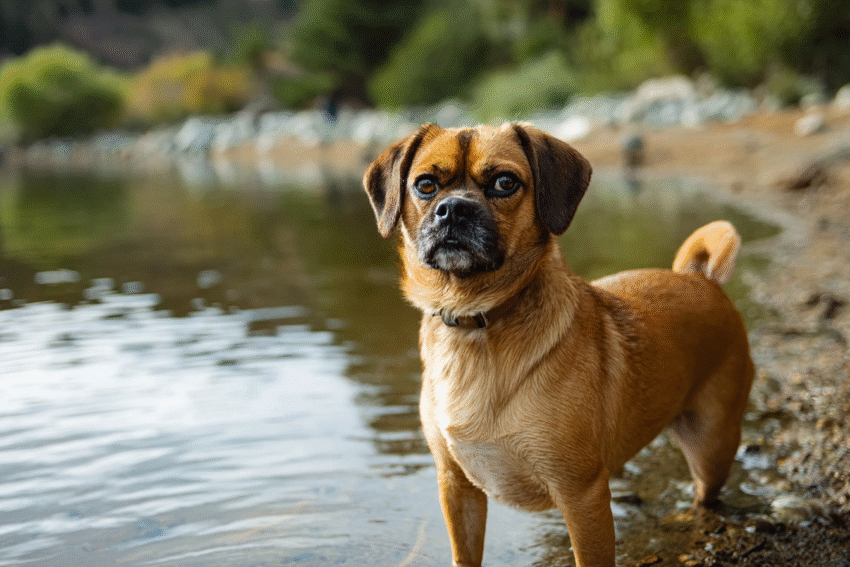
Diet & Feeding Tips
Puggles love food. And by “love,” we mean obsess over it like it’s their full-time job. Thanks to their Pug parentage, they can be prone to overeating and weight gain, so a balanced diet (with controlled portions) is essential. On the flip side, the Beagle genes give them high energy and a strong appetite, which means they’ll happily work for treats during training—but you’ll want to choose wisely.
A good diet for a Puggle should focus on quality ingredients, portion control, and feeding schedules that keep their belly full without piling on extra pounds.
Feeding guidelines to keep in mind:
Choose high-quality dog food – Look for options with real meat as the first ingredient, balanced proteins, healthy fats, and limited fillers.
Watch the calories – Puggles only need around ¾ to 1.5 cups of food per day, divided into two meals, depending on their size and activity level.
Go easy on treats – Use small, healthy training treats (or even pieces of their kibble) instead of high-calorie snacks.
Consider special needs – Some Puggles may inherit the Pug’s sensitivity to allergies or the Beagle’s hearty appetite. Grain-free, limited-ingredient, or sensitive stomach formulas can help if your pup has digestive issues.
Hydration matters – Always keep fresh water available, especially after exercise or play.
Our Top Picks:
|
Fresh, human-grade food made from real ingredients for a healthier pup today and tomorrow. Recipes made from whole food ingredients, slow cooked for nutrition and flavor and always fresh. LIMITED TIME OFFER 60% OFF YOUR FIRST BOX + A FREE FI COLLAR |
Sundays for Dogs is an air-dried, human-grade dog food made with real beef and superfoods. It’s grain-free, chicken-free, and perfect for picky eaters or dogs with sensitive stomachs. LIMITED TIME OFFER 50% OFF YOUR FIRST BOX WITH COUPON CODE BINGO50 |
Maev's vet-formulated protein-rich Raw Food is made with just 11 core ingredients including lean Beef or Chicken, fresh vegetables and fruits, and functional supplements in every serving. GUARANTEED BEST PRICE SAVE 20% OFF YOUR FIRST PURCHASE WITH CODE CHOW20 |
Fresh, human-grade food made from real ingredients for a healthier pup today and tomorrow. Recipes made from whole food ingredients, slow cooked for nutrition and flavor and always fresh.
LIMITED TIME OFFER
60% OFF YOUR FIRST BOX +
A FREE FI COLLAR
Sundays for Dogs is an air-dried, human-grade dog food made with real beef and superfoods. It’s grain-free, chicken-free, and perfect for picky eaters or dogs with sensitive stomachs.
LIMITED TIME OFFER
50% OFF YOUR FIRST BOX
WITH COUPON CODE BINGO50
Maev's vet-formulated protein-rich Raw Food is made with just 11 core ingredients including lean Beef or Chicken, fresh vegetables and fruits, and functional supplements in every serving.
GUARANTEED BEST PRICE
SAVE 20% OFF YOUR FIRST PURCHASE WITH CODE CHOW20
Hot Tip:
Want a convenient way to make sure you never run out of your Puggle’s favorite food? Check out our guide to the best dog food delivery services. Most of these services will even help you figure out the perfect diet and feeding routine for your pup.
Grooming & Shedding
Good news: Puggles are pretty low-maintenance in the grooming department. With their short, smooth coats, you won’t be spending hours detangling fur or making grooming appointments. But don’t let that fool you—these pups do shed, and regular upkeep goes a long way toward keeping your clothes and furniture fur-free.
Here’s what you need to know:
Brushing – A quick once- or twice-a-week brushing with a slicker brush or grooming mitt helps cut down on shedding and keeps their coat shiny. During peak shedding seasons (spring and fall), you may want to brush more often.
Bathing – Puggles don’t need frequent baths—once every month or two usually does the trick, unless they’ve rolled in something questionable (which, let’s be honest, is very possible with their Beagle side).
Ears – Those floppy ears can trap dirt and moisture, making them prone to infections. Regular ear checks and gentle cleanings are a must.
Nails – Trim every 3–4 weeks to prevent overgrowth and discomfort.
Wrinkles (sometimes) – If your Puggle inherits the Pug’s signature facial folds, clean them regularly to prevent irritation or infection.
Our Favorite Grooming Tools:
Health & Common Issues
Like all mixed breeds, Puggles can inherit health traits from either parent. The good news? Sometimes that genetic mix lowers the risk of breed-specific problems. The not-so-good news? They’re still prone to some of the same issues that affect Pugs and Beagles. Knowing what to watch for helps you keep your Puggle healthy and happy for years to come.
Here are the most common health concerns for Puggles:
Breathing Issues – If your Puggle inherits the Pug’s shorter muzzle, they may be prone to brachycephalic airway problems, especially in hot or humid weather. Watch for snorting, wheezing, or difficulty exercising.
Obesity – With their love of food and tendency to beg, weight gain is a major concern. Extra pounds can put stress on joints and worsen breathing issues.
Hip Dysplasia – A condition sometimes seen in Beagles, this can affect Puggles too, leading to joint pain and mobility problems.
Allergies & Skin Problems – Puggles may be sensitive to certain foods or environmental triggers, which can show up as itchy skin, ear infections, or hot spots.
Eye Conditions – Both Pugs and Beagles are prone to issues like cherry eye, cataracts, or progressive retinal atrophy.
Ear Infections – Those floppy Beagle-style ears can trap dirt and moisture, so regular cleaning is key to preventing problems.
Training & Socialization
Training a Puggle can be both rewarding and… let’s just say interesting. With the Beagle’s strong-willed independence and the Pug’s stubborn streak, these little charmers sometimes act like they know better than you. The good news? They’re incredibly food-motivated, which makes treats your secret weapon for success.
Tips for successful Puggle training:
Start early – Puppyhood is the best time to introduce basic commands, house training, and leash manners.
Use positive reinforcement – Puggles respond best to praise, treats, and play rather than harsh corrections.
Keep it short & fun – Their attention spans aren’t endless. Stick to 5–10 minute sessions and end on a win.
Be consistent – Puggles can test boundaries, so make sure everyone in the household follows the same rules.
Channel the nose – That Beagle sniffing instinct is strong! Turn it into a game with scent work or snuffle mats instead of fighting against it.
Socialization matters, too. Expose your Puggle to different people, pets, sounds, and environments early on to help curb excessive barking or shyness. With proper socialization, most Puggles grow up to be friendly, confident dogs who love being the life of the party.
Hot Tip:
Use mealtime to your advantage. Instead of just filling a bowl, try puzzle feeders or scatter feeding in the yard—your Puggle will get both a brain workout and a tasty reward.
Are Puggles Good for Families?
Yes—Puggles can make wonderful family dogs. Their playful, affectionate personalities and sturdy size mean they usually get along great with children, especially when raised together. They love being involved in family activities, whether that’s playing in the yard, joining you for walks, or curling up for movie night.
That said, like any breed, they need proper training and socialization. Puggles can be vocal and a bit stubborn, so families who set clear boundaries early on will have the best experience. With plenty of love, attention, and consistency, a Puggle can become the heart of a happy household.
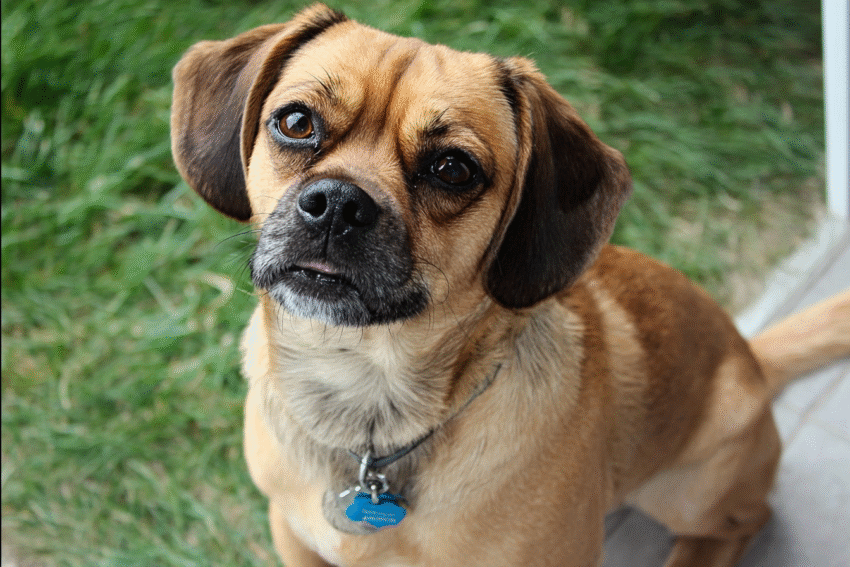
How Much Does a Puggle Cost?
| Cost Type | Estimated Amount |
|---|---|
| Purchase/Adoption | $800–$2,000 from a breeder; $100–$400 from a rescue/shelter |
| Food (monthly) | $40–$60 (depending on brand and size) |
| Vet Bills | $400–$700 per year (routine care; more if health issues arise) |
| Grooming | Minimal—$30–$50 occasionally for nail trims/ears, or DIY at home |
Similar Breeds to Consider
If you’re not 100% sold on the Puggle, check out these similar breeds:
- BeaBull (Beagle × Bulldog Mix) – A sturdier, stockier option with a sweet temperament. BeaBulls are affectionate, loyal, and a bit calmer than the Puggle while still keeping that playful Beagle spirit.
- Boston Terrier – Often called the “American Gentleman,” Boston Terriers are friendly, smart, and adaptable. They’re compact like Puggles but generally less vocal and easier to train.
- French Bulldog – If you love the Pug’s clownish charm but want a slightly sturdier, lower-energy companion, the Frenchie might be your match. They’re affectionate, quirky, and thrive in smaller spaces.
Is a Puggle Right for You?
✅ Choose a Puggle if:
You want a fun, affectionate dog that thrives on family time.
You’re okay with daily walks and some playtime to burn off their energy.
You don’t mind a little stubbornness and are willing to train with patience (and treats).
You enjoy a dog with personality—quirks, goofiness, and all.
You’re home often or can provide companionship so they’re not left alone too long.
🚫 A Puggle might not be the best fit if:
You want a totally quiet dog (Puggles can be vocal).
You prefer a low-energy, independent pet that doesn’t need much attention.
You can’t commit to regular exercise, training, and socialization.
You’re bothered by shedding—Puggles aren’t heavy shedders, but they do shed year-round.
You’re away from home for long hours without pet care options.
FAQs
Final Thoughts
The Puggle may not be a purebred, but what they lack in pedigree they more than make up for in charm, personality, and love. With their playful Beagle curiosity and the Pug’s affectionate, goofy nature, these dogs can bring endless joy and laughter to the right home. They do best with families who can give them attention, exercise, and plenty of snuggles—and in return, you’ll get a loyal, fun-loving companion who’s happiest when they’re right by your side.
If you’re ready for a dog that’s equal parts entertainer and cuddle bug, the Puggle could be your perfect match. Just remember: like any dog, they come with quirks (and a bit of stubbornness), but with patience and love, they’ll quickly become an irreplaceable member of the family.
Author
-

Hi there! I'm Nicole, the editor-in-chief and one of the writers here at DogVills. I've been a dog owner for most of my adult life and a dog lover for much longer than that. I grew up with a wonderful German Shepherd named Jake, who I loved SO much that I named my son after him. When I'm not writing for DogVills or my own site, Pretty Opinionated, I love spending time with my teenager (when he actually lets me) and my Pharaoh Hound, Freya. I'm also an avid reader AND a total TV fanatic.
View all posts
